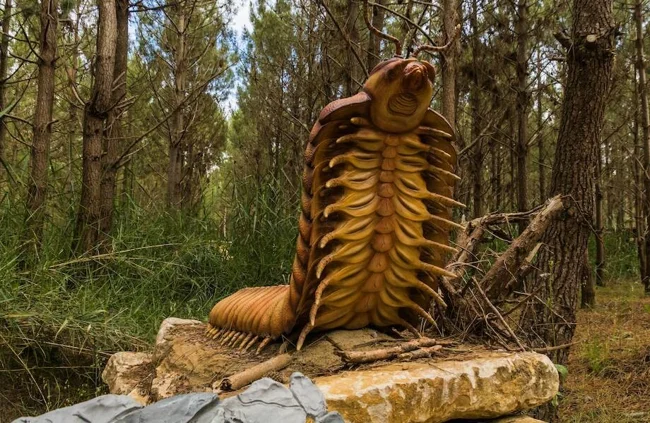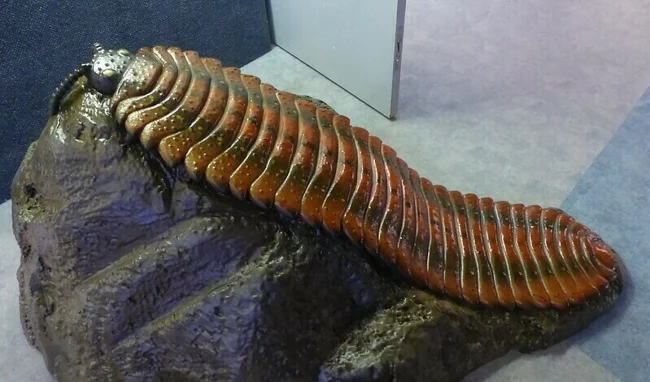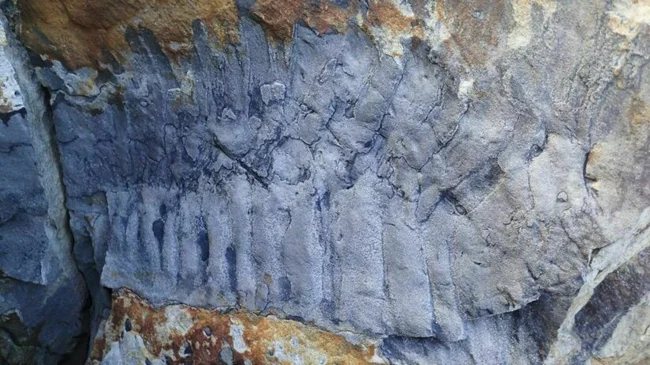If you are afraid of arthropods, then you are lucky to live today, and not during the time of Arthropleura. 
This giant centipede was recently discovered by scientists, and, as they say, completely by accident. Below we will tell you what kind of animal this is and why it did not survive to this day.
Pure chance
Researchers at the University of Cambridge say this giant centipede literally fell into their laps. In January 2018, a large piece of sandstone broke off a cliff at Howick Bay in Northumberland, England, cracked open and revealed a piece of the Arthropleura fossil. Scientists admit that their discovery was purely an accident. 
After the stones fell, one of the graduate students noticed the outlines of a marvelous animal. The broken off segment of the arthropleura is about 75 cm long and 55 cm wide. It consists of many articulated exoskeleton parts that resemble the body of a modern centipede. After studying three Arthropleura fossils, scientists suggested that these creatures lived back in the Carboniferous period. Researchers believe that the adult reached 2.6 m in length and weighed approximately 50 kg.
What exactly did scientists find? 
Scientists say that these creatures liked the tropical climate and settled near the equator. The researchers note that the fossil they found is the melted outer layer of Arthropleura, the exoskeleton that it periodically shed. It most likely filled with sand, and therefore retained its shape throughout time. The relic, by the way, was so heavy that it took 4 researchers to lift the mass to the top. Although it was previously thought that the centipede lived in coal swamps, new evidence indicates that these animals preferred open forests where they could feast on all the native plant life.
What killed arthropleura
Arthropleura have long been extinct. Why they disappeared is still unknown, but researchers say the birth of the reptiles likely took a toll on them. Probably, the struggle for food with later species of animals led to their death in the Permian period. 
0 comments
